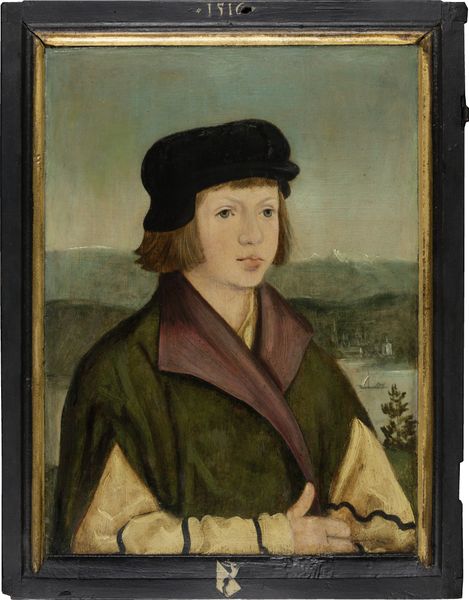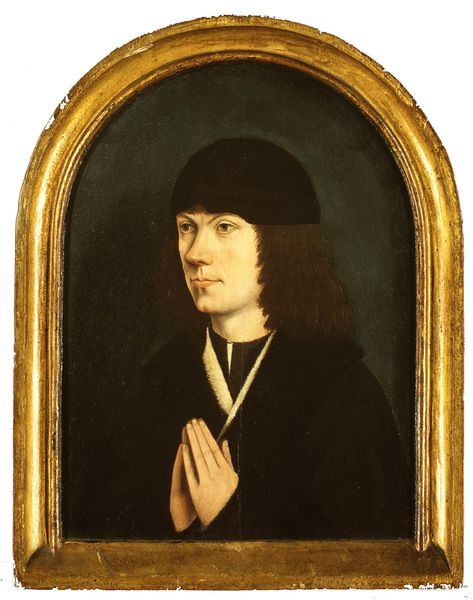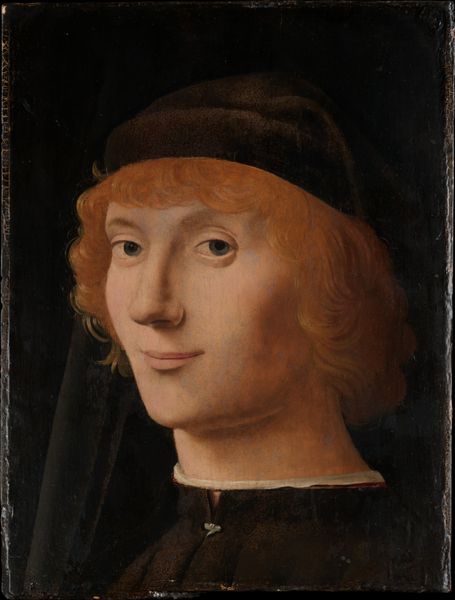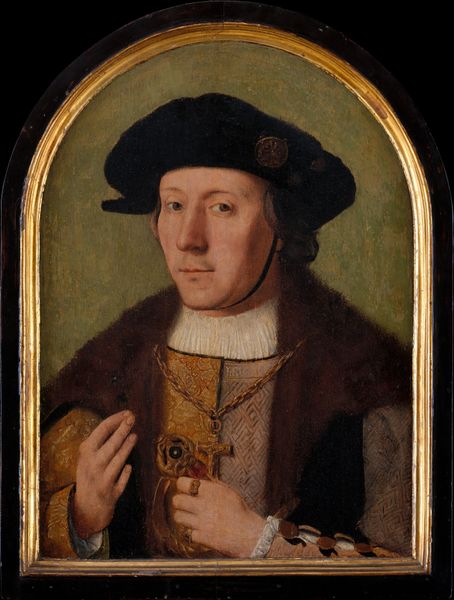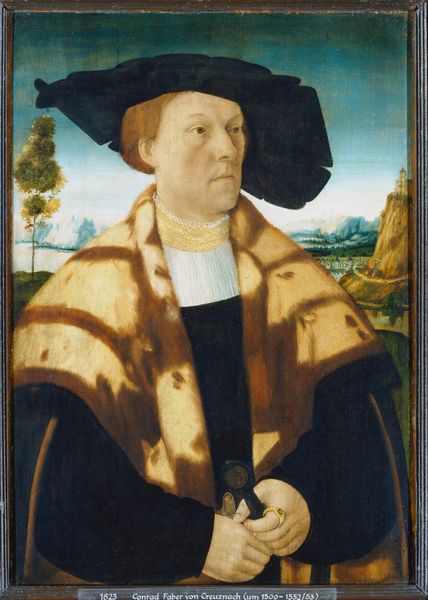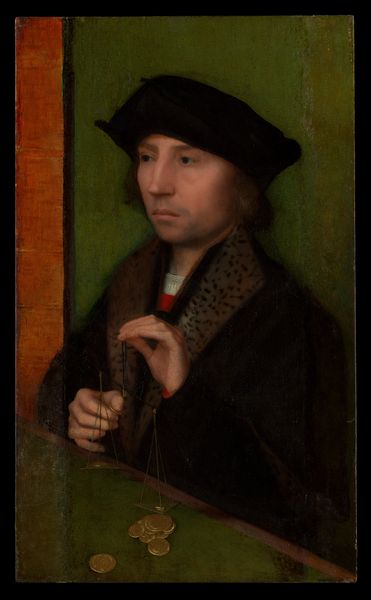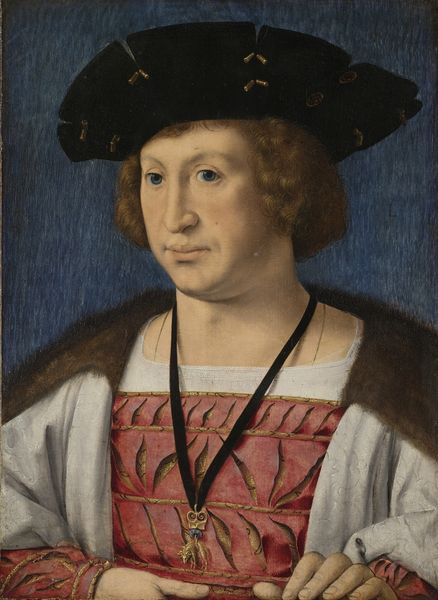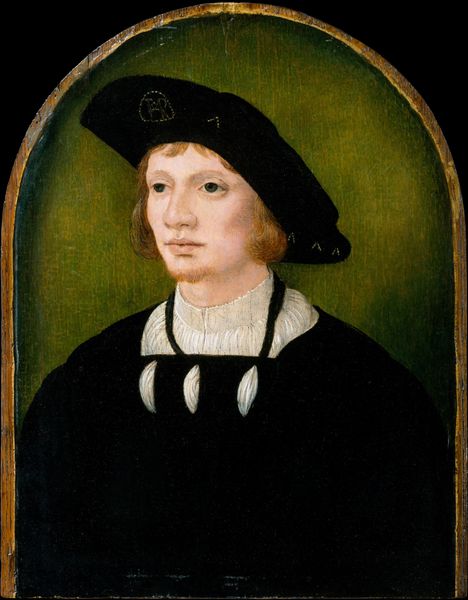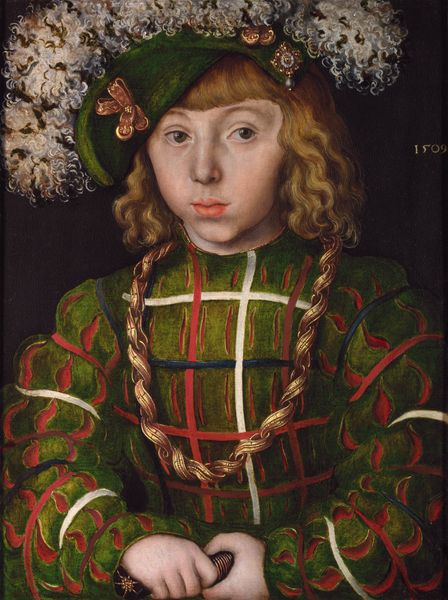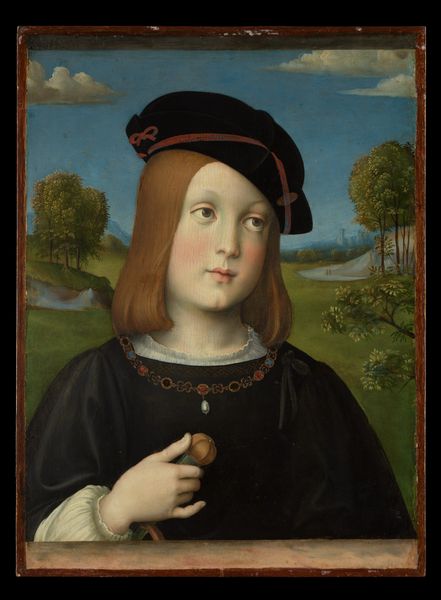
painting, oil-paint
#
portrait
#
painting
#
oil-paint
#
sculpture
#
landscape
#
figuration
#
11_renaissance
#
13_16th-century
#
italian-renaissance
Copyright: Städtische Galerie
Curator: Here we have "Portraits of the Thenn Children," dating back to 1516. It's currently housed here at the Städel Museum, though the artist remains unknown. Editor: They all seem very...serious. I mean, the kids are rendered in a way that certainly denotes wealth and status, but at what cost? The sombre tones and formal poses create a heavy atmosphere for paintings depicting children. Curator: Exactly. Consider the historical context. Commissioning portraits, particularly triptychs like this one in oil paint, served to solidify family lineage and project an image of prosperity and stability. Look at the finery adorning them; those clothes and adornments weren't cheap. Editor: And those severe, almost mournful expressions… I see the portraits as evidence of the emotional constraints placed upon even young people from privileged families during the Renaissance, trapped by rigid gender roles and societal expectations of behavior and piety. It suggests childhood isn’t necessarily a carefree existence for these children, as they perform the role of family emblem. Curator: Well, such commissioned works were more about reflecting the values of the parents or guardians than capturing the inner lives of children. Each child is rigidly presented, almost as stand-ins of their parents. Editor: Yet their vulnerability still shines through, doesn't it? Their small, doll-like faces set against the dramatic mountain scenery evoke feelings of fragility. The children’s gazes are rather unfocused. Curator: True, and in a time of religious upheaval and social change, portraiture functioned as a crucial tool for the upper classes to assert control over their image, their narrative. Editor: A visual display of power—paid for with these children's right to just be children. It seems a poignant, if unsettling, bargain. I think about the unnamed painter as someone who captures more than physical resemblance, and reflects these themes as part of the Renaissance social dynamics. Curator: That's well put. Viewing it through that lens does allow us to see it beyond just a static record of three faces. It also becomes an examination of class, identity, and the pressures of representation in a rapidly transforming world.
Comments
No comments
Be the first to comment and join the conversation on the ultimate creative platform.
